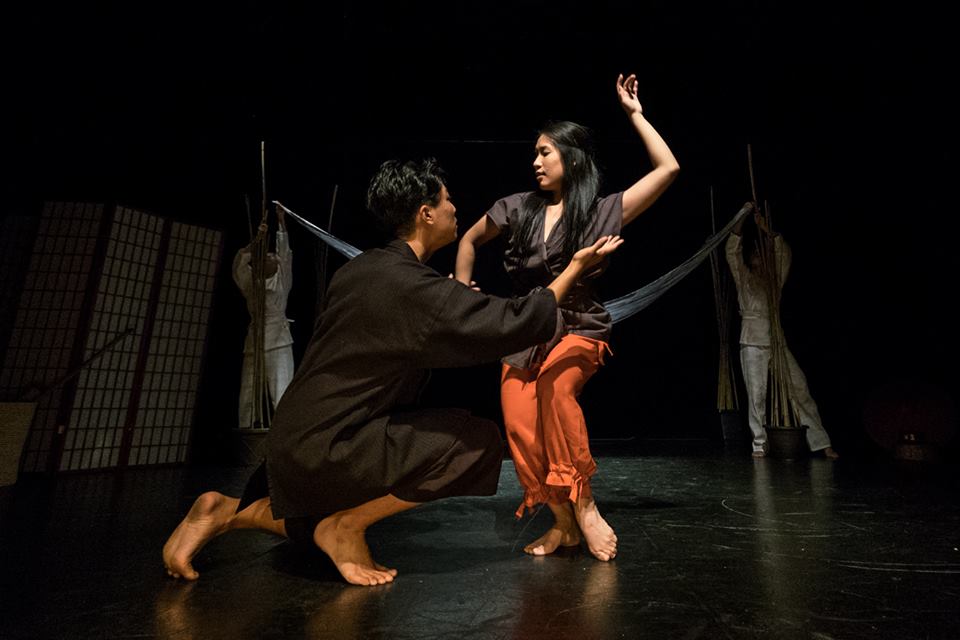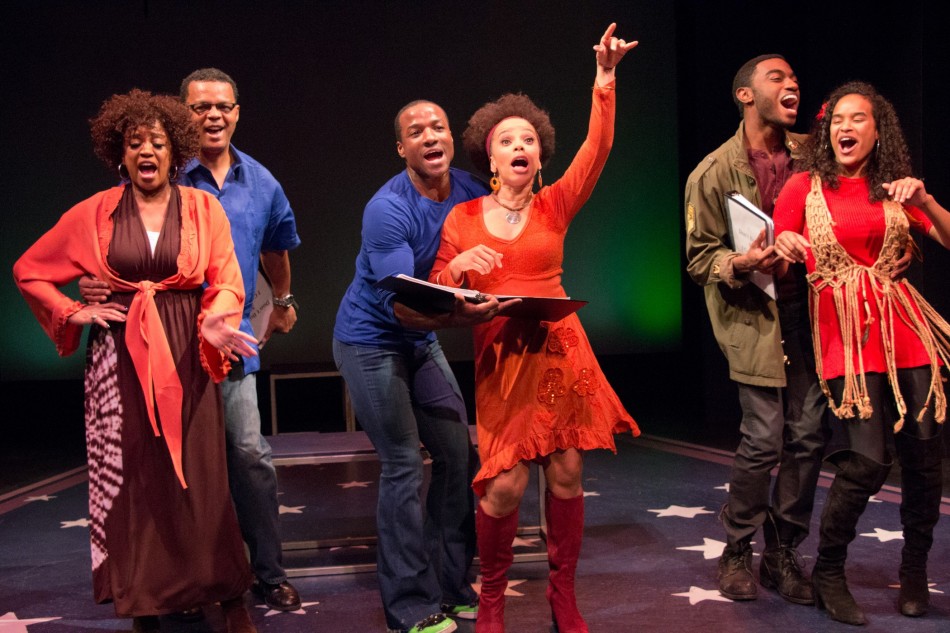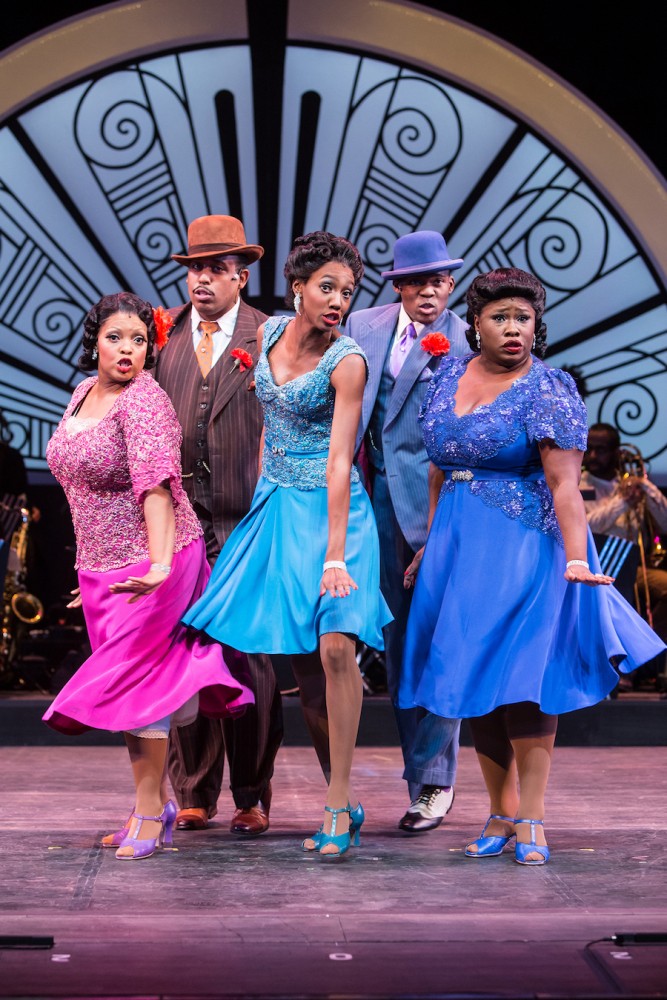by Samuel Leiter
In 1960, the six-volume Engeki Hyakka Daijiten, still Japan’s most comprehensive theatre encyclopedia, noted that there were at least seven dramatizations (there actually are more), in different genres (including noh, kabuki, and bunraku), of the Japanese legend about a diving girl, a Sea Dragon, and a precious pearl. Visual representations—mostly of the girl battling with a dragon or octopus—are abundant in Japanese art, so playwright-poet E. Thomalen must have seen something promising in choosing the subject for his folk play, The Pearl Diver, part of the Thespis Theater Festival 2016.
Here, in a clamshell, is the story—recounted by a storyteller (Edgar Eguia): the nobleman Fujiwara no Fuhito (Donald Chang) arrives at a seaside village. He seeks the magical pearl sent by the emperor of China, who has married Fuhito’s sister, to calm the lonely soul of Fuhito’s father. The pearl was stolen en route by the murderous Sea Dragon (Lester Kim). Fuhito meets and falls in love with the beautiful pearl diver Tamatori Ama (Sy Chounchaisit), who, with her mother (Kristi Donna Ng), gives him lodging in their poor abode. Tamatori and Fuhito wed, she has his baby, and, finally, she agrees to descend into the sea’s depths to lull the dangerous dragon to sleep so she can steal the pearl. Her mission turns tragic, however, as she escapes, although she successfully retrieves the pearl by slitting open her body and hiding it inside.
As with so many Japanese versions, Thomalen’s play depends to a degree on music, dance, and visual theatricality, but nothing can rescue it from its sluggish pace, mediocre performances, and various dramatic deficits. Written in rhyming couplets, a practice best left to more dramatically rich material (like Richard Wilbur’s translations of Molière), Thomalen’s dialogue is so ploddingly simple you might imagine it to have been intended for an audience of fifth or sixth graders. Here’s an example, spoken by the mother to Fuhito:
Come sit at the table,
And eat what you are able,
You must be hungry.
I apologize if it is paltry,
For that I am sorry,
It is at best a potpourri.
What we have, we must take
From the sea, early, at daybreak.
Director-choreographer Andrea Andresakis, working on a severely limited budget, hints at a Japanese ambience with a spare set designed by Mary Hamrick, using a three-paneled shoji screen, bunches of bamboo stalks, and various Japanese-like props. Needing to suggest the roiling sea, she resorts to the familiar convention of having actors manipulate long sheets of wave-painted linen.
Costume designer Laura Kung keeps the look basic, dressing most of the characters in karate gi and headbands, several with Japanese fans attached as accents; more elaborately, the Japanese emperor’s (Tan Taofa) scarlet satin robe, totally un-Japanese as it is, makes a colorful splash late in the play. The equally un-Japanese Sea Dragon, wearing a huge mask seemingly made of chiffon, looks more bizarre than fearsome, especially with finger extensions made of what look like pasted-on chopsticks. The result, especially with the artificialities of Kim’s blustering performance, does little more than stress the children’s theatre flavor of the piece.
For all the story’s Japanese background, Andresakis’s choreography resembles Chinese and Indian-inflected modern dance rather than anything from the Land of the Rising Sun; the uncomfortable feeling of quaintly patronizing “Orientalism” pervading the piece is further underlined by the onstage violinist, Edward W. Hardy, who accompanies most of the action playing his own music, which serves only to incline the auditory ambience even more toward the Chinese side of the Orientalist spectrum.
I see no Japanese names in the program but all the actors and several of the creative contributors, at any rate, appear to be of Asian descent. The performers carry out Andresakis’s choreographic assignments well enough, especially the graceful Chounchaisit as Tamatori Ama (which means “Jewel-Snatching Pearl Diver,” and is the title of a kabuki dance play; the character is Mangetsu in most modern Japanese versions). Little need be said of the acting itself.
Summing up: The Pearl Diver contains more mother of pearl than pearls.
The Pearl Diver
Hudson Guild Theatre
441 W. 26th Street, NYC
Final performance: September 3






















